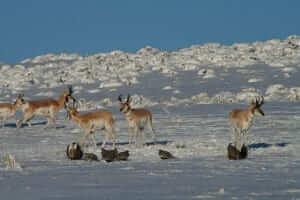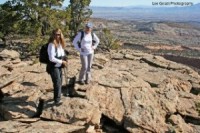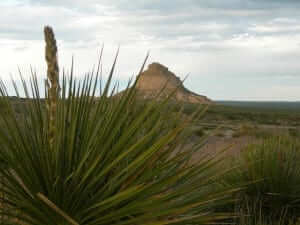Written by Sarah White
What’s the fuss about a funny little bird that boogies? Why do they matter? Why should we save sage grouse?
Greater sage grouse are found only in North America and much like their smaller, even more imperiled cousin the Gunnison sage-grouse, they are on a path to extinction. In 2010, they became candidates for protection as an endangered species. It’s not always easy to see why one admittedly odd bird warrants our attention. Turns out saving sage grouse benefits more than the bird. Here are the Top 6 Reasons to save sage grouse:
1. Restores Balance to the Land
Sage grouse are suffering because things are out of balance. We need better land management to restore the balance between wildlife habitat and oil and gas drilling.
2. Brings People Together
We have a common problem: a landscape and a species dependent on it are at risk. Just like the sage grouse, we are dependent on this same ecosystem for recreation, ranching, oil and gas development, etc. This requires people from all walks of life to work together to create effective and enforceable plans that protect the best remaining habitat – plans based on science, not politics.
3. Protects Ranching
Ranch lands and wildlife habitat are often one and the same. Pronghorn and sage grouse share the land with cows. Sage grouse conservation is providing ranchers with new incentives, grazing techniques and funding opportunities that can enhance their operations while also restoring habitat and putting sage grouse on the path to recovery.
4. Benefits other Wildlife

Sage grouse are an important part of the web of life in the West. When we protect habitat for sage grouse, we protect habitat for hundreds of other animals including elk, deer, and antelope, creating a cascade effect for conservation.
5. Supports a Vibrant, Diverse Economy
Once sage grouse provided a source of protein for families and while hunting does happen in some areas, more and more grouse are proving a reason for tourists to visit western communities. In 2013, over 100 people visited Craig, Colorado paying to stay in hotels, consuming 200-300 meals and spending money on fuel and supplies as a result of Conservation Colorado’s grouse tours.
6. Provides a Guarantee for Future Generations
By protecting sage grouse now when the species is still healthy enough to recover, then we ensure that these amazing birds and the wild landscapes upon which they depend, are here for future generations to value and enjoy.
We have a responsibility to leave the world a better place for future generations and that means being good stewards of the land and protecting habitat for all wildlife.
Folks at BLM have been working hard to create a plan to save sage grouse and they need your encouragement to ensure the plan includes the most proactive measures and best science.

 Petrika Peters, one of our Field Organizers in Grand Junction, loves the mountains on the western slope, but the San Juans have a special place carved out in her heart. It’s where she met her partner, fell in love, got married, and spent a special week with mountain goats as the sole visitor to her camp!
Petrika Peters, one of our Field Organizers in Grand Junction, loves the mountains on the western slope, but the San Juans have a special place carved out in her heart. It’s where she met her partner, fell in love, got married, and spent a special week with mountain goats as the sole visitor to her camp! Gateway, Unaweep Canyon and The Monument. It’s a great place to see the spectacular red rock, really fun bouldering and unbeatable stargazing!
Gateway, Unaweep Canyon and The Monument. It’s a great place to see the spectacular red rock, really fun bouldering and unbeatable stargazing! Our Denver field organizers have their favorite spots too, Becca Strelitz’s favorite place (which tends to change every time she discovers a new area of Colorado) is currently Crater Lakes in the Indian Peaks Wilderness. It is a relatively easy hike to the first of the lakes from the Moffat Tunnel and the encompass everything you’d imagine Colorado wilderness to entail.
Our Denver field organizers have their favorite spots too, Becca Strelitz’s favorite place (which tends to change every time she discovers a new area of Colorado) is currently Crater Lakes in the Indian Peaks Wilderness. It is a relatively easy hike to the first of the lakes from the Moffat Tunnel and the encompass everything you’d imagine Colorado wilderness to entail.

